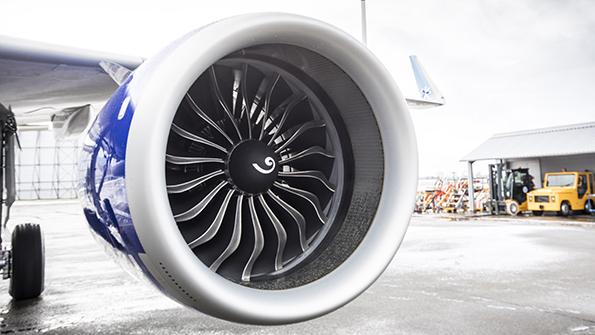
GE Aviation and Safran are confident their engine overhaul support networks will be ready to handle an anticipated jump in demand for CFM International Leap engine maintenance, forecast to begin around mid-decade.
Today, the majority of CFM’s aftermarket support is generated by CFM56-
5B and -7B engines that power Airbus A320ceos and Boeing 737 Next-Generation variants, respectively. This will continue until around 2025, when annual CFM56 shop visits are expected to peak at about 2,500 per year, figures shared by Safran show (Safran and GE Aviation are 50-50 joint venture partners in CFM).
Meanwhile, Leap shop visits are just beginning. The Leap 1A variant entered service in mid-2016 on the Airbus A320neo. The Leap 1B joined it a year later, when the 737 MAX flew. A third variant, the Leap 1C, is poised to begin its service life on the Comac C919, China’s newest narrowbody, following completion of certification testing in July.
In 2025, the earliest Leaps to enter service will be in their initial shop-visit windows, with perhaps 500 total inductions. The figure will climb quickly. In 2030, the CFM fleet will be generating more than 4,000 shop visits, roughly split between the CFM56 and Leap variants.
“We know that we have a big ramp-up in front of us on the Leap maintenance, repair and overhaul,” Safran’s CEO Olivier Andries said on a late July earnings call. “So we have to build up capacity fast.”
The projected rise in Leap overhauls assumes that the fleet’s average utilization, which plummeted at the peak of the pandemic along with the rest of passenger aircraft, continues to rise. Aviation Week’s Tracked Aircraft Utilization (TAU) shows average monthly flight activity topped 270 flight hours (FH) in July 2022—the highest figure since January 2020. Cycles showed a similar pattern, with July 2022’s average of 123 topping all previous monthly average back to January 2020.
Both July figures were 13% below July 2019’s comparable totals, however, suggesting CFM-powered A320neo-family aircraft will get busier.
The two-year 737 MAX grounding makes tracking Leap 1B figures a bit more challenging, but TAU figures suggest that fleet is matching, if not exceeding, its prepandemic and pregrounding activity. The average FH figure for the Leap fleet in July was 304 hr. per engine, while cycles totaled 115.
One key to meeting projected overhaul demand will be the completion of a new overhaul facility in Hyderabad, India, by 2025. The shop, which will handle engines under CFM long-term service agreements (LTSA), is slated to handle about 300 engines per year within its first decade, making it among the busiest Leap facilities in the world.
Hyderabad will be the seventh OEM shop with Leap capabilities, joining facilities in: Brussels; Petropolis, Brazil; Saint Quentin-en-Yvelines, France; Lafayette, Indiana; Kuala Lumpur; and Queretaro City, Mexico. Six more shops have agreements with CFM to handle Leap work, including Delta TechOps, which announced its agreement in July. CFM expects another half-dozen or so shops to sign on, putting the global Leap overhaul network at about 20 facilities worldwide by 2030.
Transition from the CFM56 to the Leap engine is not the only shift affecting the CFM aftermarket landscape in the years ahead. The Leap fleet is far more reliant on LTSAs than its predecessor. Safran executives estimate that about 50% of the 5,500 in-service Leaps are covered by long-term agreements, compared with around just 15% of the CFM56 fleet. The Leap percentage is expected to grow as deliveries ramp up, peaking at perhaps 70% of the fleet in 2030, before the balance shifts again toward time-and-materials contracts.
“It could reach 65-70% of the total contracts,” Safran Chief Financial Officer Pascal Bantegnie said on the July earnings call. “But at this point in time, I would say it’s more or less balanced 50-50 between [LTSAs] and time and material.”
Among the short-term concerns on engine manufacturers’ minds is supply chain stability, and CFM is not immune. But the materials supply challenges affecting the original equipment side are not spilling over to MRO.
“We don’t see an impact [from supply chain issues] on our repair capabilities,” Andries said.





